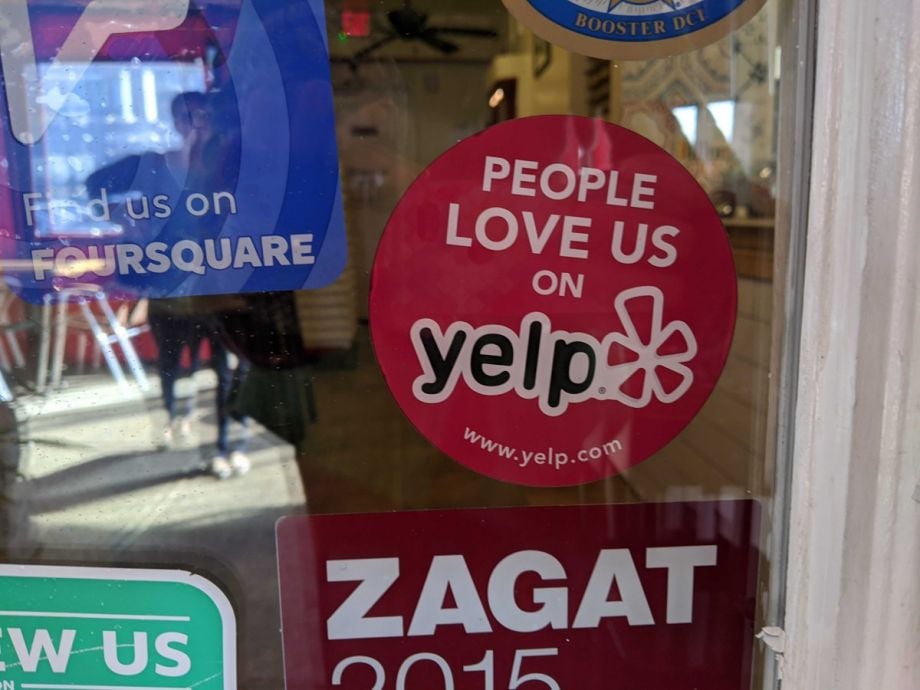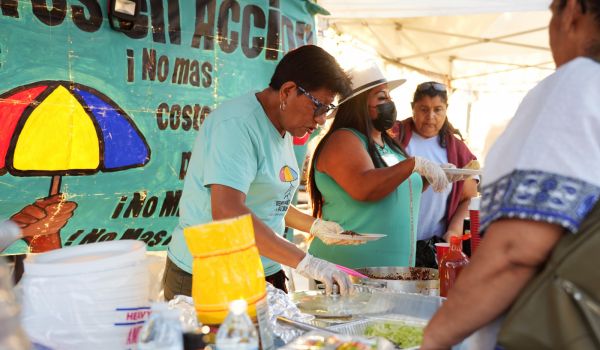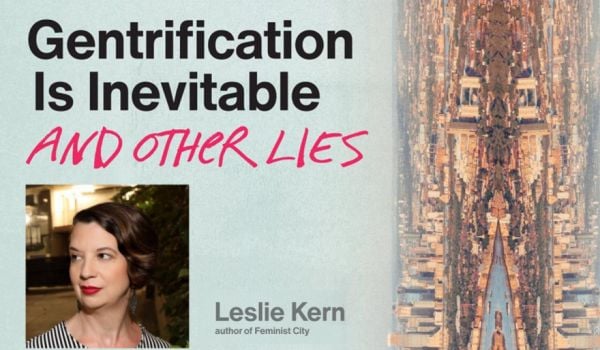In today’s urban culture, “ethnic” food is having a moment. Pupusas, banh mi, phó, arepas, dosas, tamales, manakeesh, tacos, kebabs, empanadas, and other “exotic” dishes have become popular among affluent and white consumers keen to explore new flavors and establish their cultural capital and multicultural values. Foodies are skipping acclaimed restaurants in upscale districts for “holes in the wall” in immigrant and low-income neighborhoods to discover “authentic” culinary treasures.
However, as they venture into new territory in search of exciting food experiences, they contribute to the transformation of urban foodscapes — the physical, symbolic, cultural, lived, and imagined food environments — that have been built by people of color, often immigrants, to confront decades of neglect, segregation, and systemic racism by food retailers, investors, and policy makers.
What used to be foodscapes for residents are becoming increasingly cosmopolitan, privileging the tastes of outsiders who will presumably bring revenue, income, and status. The carefully curated foodscapes that emerge to meet new consumer demands erase the history of places, the struggles of residents, and the labor of food workers and ethnic entrepreneurs. Such erasure occurs in the way food and place are described and represented, as well as in the changing rhythm of everyday life and use of space for food production and consumption. Together, these processes create a new sense of place in which long-term residents and businesses no longer belong, pointing at the powerful role of food in contributing to gentrification.
Narratives of Food and Place on Social Media
One way this dynamic plays out is on social media, including Yelp reviews in which primarily young, white, college-educated, affluent, and tech-savvy consumers rate and comment on restaurants. By analyzing the language of over 2,400 reviews associated with the 10 best- and worst-rated restaurants in three San Diego neighborhoods known for their ethnic diversity and large immigrant population (Barrio Logan, City Heights, and Southeastern San Diego), my research has identified several common themes that reveal Yelpers’ biased assumptions about the relationship between food, ethnicity, and place. As a geographer, I have been both fascinated and troubled by the way these reviews contribute to gentrification by changing the image and material conditions of specific neighborhoods to meet the desires of foodies at the expense of long-time residents.
The most overused terms in Yelp reviews are “holes in the wall,” “neighborhood gems,” and “hidden treasures” (note that quotation marks are used here to show terms and quotes gathered directly from Yelp reviews). In the neighborhoods I studied, these terms are used exclusively to describe restaurants identified as “ethnic”— meaning non-white or other. Ostensibly, Yelpers believe that ethnic restaurants are the only type of establishments that belong in such neighborhoods. Surely, if people wanted French, Italian, or “New American” food, which oddly are not considered ethnic, they would go to more upscale neighborhoods, unaware that their meal would still likely be cooked by immigrants.
Yelpers’ apparent surprise at having found “delicious” and “authentic” food in such “dark,” “sketchy,” and “unsafe” locations hints at their “low expectations” regarding dining in ethnic neighborhoods — an assumption exacerbated by the popularized notion of food desert that paints most low-income and communities of color as lacking in fresh and healthy options and drowning in fast and junk food. Thus, Yelpers simultaneously challenge and reproduce place stigma, by relishing in the tension between excitement and danger.
Yelpers’ Privilege
Reviewers often express pride in having “discovered” unique foods and places, likening themselves to urban pioneers who stand out by their willingness to step outside of their comfort zone and “mingle with the locals” to enjoy great food and lead an exciting urban lifestyle.
Prior to their discoveries, such foods (and places) had been meaningless in the sense that they generated little income and no media attention. The “home cooks,” “housewives,” and “darling little men” who prepare and serve this delicious food had been seemingly unaware of that deliciousness and its great market potential, being held back by tradition, an “absence of creativity,” a “limited repertoire,” “awful people skills,” “shady management,” and “terrible décor.” As a result, ethnic food is often equated to cheap food — a trap that reinforces the idea that it lacks sophistication and constrains ethnic entrepreneurs.
Although some Yelpers are too “scared” or “disgusted” to enjoy these experiences, others seem to be thrilled. Those often appear to be driven by a refined knowledge of good food, superior moral values, and somewhat countercultural attitudes. Their ability to recognize talent in “innovative young chefs” who “prepare food to perfection” comes from “having travelled all over the world” and “eaten in some of the country’s best restaurants”— credentials that reveal a mobility and privilege denied to those who work and live in ethnic enclaves.
Many Yelpers congratulate themselves for uplifting ethnic restaurants, highlighting their eagerness to “support immigrants,” “build a vibrant community,” “boost ethnic entrepreneurship,” and “do their share to help Black-owned businesses.” For some, this reflects an oppositional ethos, including a rejection of the corporate food system and a return to simpler and healthier eating. Such moral superiority is also tied to multiculturalism and the notion that eating other people’s food is a sign of open-mindedness, cosmopolitanism, and even anti-racism. Enjoying a taco or sambusa is seen as a benevolent act that lifts up marginalized people, but it focuses more on the good deed of consumers than on the struggles of producers, doing little to challenge racial inequality.
Authenticity, Cosmopolitanism, and Gentrification
The idea of authenticity is omnipresent in Yelp reviews and is the highest praise offered to ethnic restaurants. Authenticity is typically based on aesthetic and symbolic factors such as décor, presentation, and iconic ingredients, rather than on the people who cook food from their homelands and the journeys that produced such food. In that sense, authenticity represents an outsider’s perspective on the originality of food, cementing otherness and denying self-identification and fluidity.
Interestingly, the most authentic restaurants, based on how often Yelpers mention authenticity, are not located in neighborhoods where ethnic businesses serve their own people, but in areas where the foodscape is in the process of becoming more cosmopolitan and oriented toward white consumers. In these borderlands between busy commercial districts and “off-the-beaten path” destinations, new or revamped restaurants market themselves as authentic to outsiders by investing in aesthetics, appropriating and “elevating” ethnic foods, and curating the past to create flattened symbols of ethnicity that are appealing to Yelpers’ imaginaries of what authenticity means.
Ironically, in Yelpers’ praises of authentic restaurants, ethnicity appears to be taking a back seat. Instead, reviewers turn their attention to consumers and their experiences, emphasizing the “diverse and eclectic crowds” of like-minded people delighting in exotic food, while rarely acknowledging the presence of immigrants working behind the kitchen doors and living in surrounding areas. In other words, the ethnic becomes cosmopolitan. This switch reflects and influences the gentrification trends I have documented in my research on San Diego’s foodscape over the past decade.
As food draws newcomers to places like Barrio Logan and City Heights, the long-time residents and businesses who have built their ethnic foodscapes are gradually displaced by higher rents, inflated food prices, changing menus, and a disappearing way of life and sense of community. They no longer feel at home in a cosmopolitan foodscape that simultaneously praises their culture but ignores their everyday struggles. Will these gentrified foodscapes eventually become inauthentic?
Pascale Joassart-Marcelli is Professor of Geography and Director of the Interdisciplinary Urban Studies and the new Food Studies programs at San Diego State University, where she teaches courses on food geographies and conducts research on food, ethnicity and the contemporary city. She is the author of The $16 Taco, coming out in October from the University of Washington Press and co-editor of Food and Place.
















